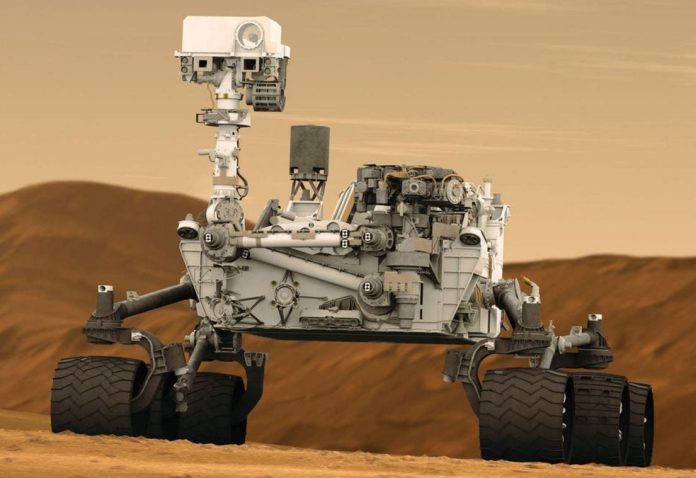Alexander Sehlke, a post-doctoral fellow at NASA Ames Research Center, delivered a presentation titled “Designing for Human Space Flight” at the 2017 Sensors Expo and Conference.
Sehlke’s presentation began by noting how NASA’s journey to Mars requires a revolution in the operational and engineer design for deep space travel. Decision-making at a different cadence than is currently experienced during space exploration is needed, Sehlke explained.
NASA analog missions provide remote field tests for innovations in a Mars-like environment in anticipation of future space expeditions. Analog missions explore life at extremes as a way to provide input into the habitability potential of the solar system, Sehlke noted.
The BASALT research program, for instance, is focused on understanding the habitability conditions of early and present-day Mars in two relevant Mars-analog locations. The Eastern Snake River Plain (ESRP) in Idaho reflects the lava terrains of present-day Mars, whereas the East Rift Zone Kīlauea reflects the volcanic conditions of early Mars.
Analog missions can take advantage of Commercial off the Shelf (COTS) technologies and those handed down by NASA’s robotic exploration missions. These missions yield input into the design of flight instruments by mapping the environment of terrestrial planets.
To shed light on the ergonomic design and limits of these instruments, Sehlke and his colleagues tested numerous spectrometers during simulated human Mars exploration missions as part of NASA’s BASALT (Biologic Analog Science Associated with Lava Terrains) project in Idaho and Hawaii in 2016.
These simulations pinpoint which human-robotic concepts (ConOps) and supporting capabilities enable scientific return and discovery, as well as evaluate the technologies directly relevant to conducting the science, Sehlke explained. Examples include mobile science platforms, extravehicular informatics, display technologies, communication and navigation packages, remote sensing, advanced science mission planning tools, and scientifically relevant instrument packages.
One of the major challenges facing a manned mission to Mars is communications delays between the astronauts and mission control, which puts a lot of stress on these missions. In order to address this challenge, handheld scientific instruments are key. These portable scientific instruments need to be able to take the laboratory into the field, collect data on the go, scan a larger area and conduct sample evaluations. For regular updates on the team’s research, click here.

